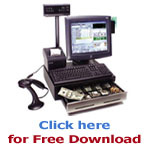How much information can an RFID tag store?
It depends on the vendor and the application, but typically a tag carries no more than 2KB of data—enough to store some basic information about the item it is on. Companies are now looking at using a simple “license plate” tag that contains only a 96-bit serial number. The simple tags are cheaper to manufacture and are more useful for applications where the tag will be disposed of with the product packaging.
What’s the difference between read-only and read-write RFID tags?
Microchips in RFID tags can be read-write, read-only or “write once, read many” (WORM). With read-write chips, you can add information to the tag or write over existing information when the tag is within range of a reader. Read-write tags usually have a serial number that can’t be written over. Additional blocks of data can be used to store additional information about the items the tag is attached to (these can usually be locked to prevent overwriting of data). Read-only microchips have information stored on them during the manufacturing process. The information on such chips can never be changed. WORM tags can have a serial number written to them once, and that information cannot be overwritten later.
What’s the difference between passive and active tags?
Active RFID tags have a transmitter and their own power source (typically a battery). The power source is used to run the microchip’s circuitry and to broadcast a signal to a reader (the way a cell phone transmits signals to a base station). Passive tags have no battery. Instead, they draw power from the reader, which sends out electromagnetic waves that induce a current in the tag’s antenna. Semi-passive tags use a battery to run the chip’s circuitry, but communicate by drawing power from the reader. Active and semi-passive tags are useful for tracking high-value goods that need to be scanned over long ranges, such as railway cars on a track, but they cost more than passive tags, which means they can’t be used on low-cost items. (There are companies developing technology that could make active tags far less expensive than they are today.) End-users are focusing on passive UHF tags, which cost less than 40 cents today in volumes of 1 million tags or more. Their read range isn’t as far—typically less than 20 feet vs. 100 feet or more for active tags—but they are far less expensive than active tags and can be disposed of with the product packaging.
What is the read range for a typical RFID tag?
There really is no such thing as a “typical” RFID tag, and the read range of passive tags depends on many factors: the frequency of operation, the power of the reader, interference from other RF devices and so on. In general, low-frequency tags are read from a foot (0.33 meter) or less. High-frequency tags are read from about three feet (1 meter) and UHF tags are read from 10 to 20 feet. Where longer ranges are needed, such as for tracking railway cars, active tags use batteries to boost read ranges to 300 feet (100 meters) or more
What is tag collision?
Tag collision occurs when more than one transponder reflects back a signal at the same time, confusing the reader. Different vendors have developed different systems for having the tags respond to the reader one at a time. These involve using algorithms to “singulate” the tags. Since each tag can be read in milliseconds, it appears that all the tags are being read simultaneously.
What is energy harvesting?
Most passive RFID tags simply reflect back waves from the reader. Energy harvesting is a technique in which energy from the reader is gathered by the tag, stored momentarily and transmitted back at a different frequency. This method may improve the performance of passive RFID tags dramatically.
What is a chip less RFID tag?
“Chip less RFID” is a generic term for systems that use RF energy to communicate data but don’t store a serial number in a silicon microchip in the transponder. Some chip less tags use plastic or conductive polymers instead of silicon-based microchips. Other chipless tags use materials that reflect back a portion of the radio waves beamed at them. A computer takes a snapshot of the waves beamed back and uses it like a fingerprint to identify the object with the tag. Companies are experimenting with embedding RF reflecting fibers in paper to prevent unauthorized photocopying of certain documents. Chip less tags that use embedded fibers have one drawback for supply chain uses—only one tag can be read at a time.
Who are the leading RFID tag vendors?
There are many different RFID vendors with different areas of expertise. Some make active tags. Some make passive tags. Some focus only on UHF. Others sell low-, high- and ultra-high frequency systems. RFID Journal has created a searchable database of RFID vendors around the world.
What are micro-electro-mechanical systems (MEMS)?
MEMS (micro-electro-mechanical systems, which are smaller than microscopic dust mites) have been used for several decades in everything from inkjet printers to accelerometers that deploy air bags in cars. A MEMS RFID tag contains micromechanical components that are expected to be rugged and easier to produce, and which could be attached directly to medical devices. Such a tag can withstand exposure to wide temperature ranges and gamma radiation.














